|
“I. The Horror in Clay
The most merciful thing in the world, I think, is the inability of the human mind to correlate all its contents. We live on a placid island of ignorance in the midst of black seas of infinity, and it was not meant that we should voyage far. The sciences, each straining in its own direction, have hitherto harmed us little; but some day the piecing together of dissociated knowledge will open up such terrifying vistas of reality, and of our frightful position therein, that we shall either go mad from the revelation or flee from the light into the peace and safety of a new dark age.” -H.P. Lovecraft from The Call of Cthulhu (1926)”
Is the atomic age an inevitable consequence of piecing together disparate information without moral restraint? Now that we have unleashed this horror upon the Earth, how has humanity responded?
Below is an excerpt from a blog I wrote five years ago which I have minimally updated to reflect 2016. After the excerpt, is a continuation I wrote recently.
“Recently, I have been reading and viewing many sources focusing on nuclear and thermonuclear war. This is a topic which has always interested me due to the profound implications it has for humanity. People, as a whole, contain the power necessary to achieve absolute global destruction at any time based on any whim. Yet, we all live complacently, uncaringly, and some even unknowingly in eternal consumer bliss. Too often, people, you, me, we, often view things or have them explained at a level we completely understand, yet its implications we do not fully grasp and therefore accept the situation as if it were normal. We have this feeling of, ‘well, I understand what the atom bomb does so that’s just the way it is.’ Mutually assured destruction, bomb shelters, diplomacy with North Korea and Iran, anti-missile capabilities; all these things are meant to convince us we’re safe...
Today, Russia and the U.S. still have nearly 2,000 nuclear weapons each primed for use at very short notice (this number has remained nearly identical for five years). Combined, the countries have approximately 4500 operational atomic bombs.
Of course the potential to use them exists, that's why we have them lying around. Nuclear weapons exist as an implicit hypocrisy. As Martin Ames articulates so well in his essay Thinkability:
'...the only provocation that could bring about the use of nuclear weapons [is] nuclear weapons. What is the priority target for nuclear weapons? Nuclear weapons. What is the only established defense against nuclear weapons? Nuclear weapons. How do we prevent the use of nuclear weapons? By threatening the use of nuclear weapons. And we can't get rid of nuclear weapons, because of nuclear weapons. The intransigence, it seems, is a function of the weapons themselves.'
-Martin Amis Thinkability essay from Einstein's Monsters (1987)
My question is, ‘where do we go from here?’ Stronger weapons? Tsar Bomba already carried a potential yield of 100 megatons of TNT. Purposely restricted to only half of its potential, this 50 megaton thermonuclear bomb was already tested, and worked. This bomb, at half power, produced, in one explosion, 10 times the amount of total fire power used in WWII, including both Hiroshima and Nagasaki. This bomb exploded about 2.5 miles from the Earth’s surface and registered a 7.1 on the Richter scale.
The seismic shock created was observable three times as it circumnavigated the globe. The fireball was 5 miles in diameter, the mushroom cloud was 40 miles high, all buildings in a village 34 miles away were completely destroyed, third degree burns occurred 62 miles away, windowpanes broke 560 miles away, the flash was seen 620 miles away, and the fallout at full scale could have accounted for 25% of all nuclear fallout since atomic bombs were invented. This is not a current event. This October 30 will be the 55 year anniversary of this detonation.
And yet, this nostalgic tone has a tinge of bitter sweetness. It has been 55 years, and nothing of this magnitude has been deployed for combat reasons. However, it has been 55 years; I cannot imagine where we’ve come in our capabilities since then. But, the past has proven itself. We ought no longer to ask ourselves, ‘Coulda? Shoulda? Woulda?’ What we need to ask is, ‘Can we? Shall we? Will we?’ The answer to the former is obvious. The fact that some even consider the latter debatable, I find, absolutely detestable. To me, there is only one obvious answer to the question, ‘Where should we go from here?’ Kurt Vonnegut Jr., in Slaughterhouse Five, has already articulated my sentiment:
'American planes, full of holes and wounded men and corpses, took off backwards from an airfield in England... The formation flew backwards over a ... city that was in flames. The bombers opened their bomb bay doors, exerted a miraculous magnetism which shrunk the fires, gathered them into cylindrical steel containers, and lifted the containers into the bellies of the planes. The [soldiers] below had miraculous devices of their own, which were long steel tubes. They used them to suck... fragments from the crewmen and planes... When the bombers got back to their base, the steel cylinders were taken from the racks and shipped back to the United States of America, where factories were operating night and day, dismantling the cylinders, separating the dangerous contents into minerals... The minerals were then shipped to specialists in remote areas. It was their business to put them into the ground, to hide them cleverly, so they would never hurt anybody ever again...'
-Kurt Vonnegut Jr. from Slaughterhouse Five (1969)
Although Vonnegut Jr. is obviously being rhetorical in his suggestion that we simply make time run backwards, metaphorically, however, this is precisely our only sane option.
So, I look back on the many Sci-Fi films of the past and try to see how they relate to both ‘their’ times and ‘my’ times. That is, how did this have meaning then and how does it have meaning now. The Sci-Fi and horror genres are inexplicably connected with the fears, with the ethos, of the period. In 1945, America unleashed two atom bombs on Japan. In the 1950’s the Japanese personified this tragedy and its fallout with Godzilla; American’s were warned of the consequences of nuclear war with The Day the Earth Stood Still. In the 60’s we had Dr. Strangelove or: How I Learned to Stop Worrying and Love the Bomb and a very dramatic (so much so that it was quickly banned from television) documentary from the BBC entitled The War Game (shown at the end of this excerpt) depicting what nuclear war would spell for the United Kingdom. In the 70’s, the sequel to the Planet of the Apes predicted a future where humanity worships the atomic bomb.
Here we are today. How does atomic warfare fit into our ethos? Is it still a menace as Godzilla portrays? Are we keeping it within our realm, under control, as The Day the Earth Stood Still beseeches us? Or are our whims of diplomacy feeble and nuclear fallout only inevitable? Do we still worship the atomic bomb? These are important questions we need to ask ourselves.
Nuclear war is not a war, it is annihilation. We need not worry about the world ‘after’; we need only to worry about the world ‘before’. However, the world ‘before’ is only rhetorical sentiment; the reality is that there is only the world ‘now’. ‘After’, there won't be one left.”
-Bradley Lusk, Godzilla from Brad's Banal Banter, 2011
Below is the docudrama 'The War Game' (1965)- banned from television until 1985 - in two parts.
“I realize the tragic significance of the atomic bomb… It is an awful responsibility which has come to us… We thank God that it has come to us, instead of to our enemies; and we pray that He may guide us to use it in His ways and for His purposes.”
-President Harry S. Truman, August 9, 1945
On August 6, 1945 the United States of America (USA) ushered in the atomic age of warfare by dropping the first of two atomic bombs on the Japanese city of Hiroshima. Hiroshima was chosen as a target since it was a supply and logistics base for the Japanese military, and because "[t]here are adjacent hills which are likely to produce a focusing effect which would considerably increase the blast damage." The plane that was to carry the bomb was called the Enola Gay, manned by Colonel Paul W. Tibbets. Little Boy, the atomic bomb, was loaded with over 140 pounds (64kg) of uranium-235. At 8:09AM, Tibbets began his bomb run in the Enola Gay and handed over control of dropping Little Boy to his bombardier Major Thomas Ferebee. At 8:15AM Little Boy was dropped 31,000 feet above Hiroshima- the bomb fell for 44.4 seconds (the time it takes one television commercial to air during the Super Bowl) before ultimately detonating approximately 2,000 feet above the city. A silent 44.4 seconds separating the atomic age from the 4.5 billion years of evolution that preceded them. I imagine the tensions on the plane; white knuckled sweaty palms, weeks or contemplation, years of scientific development, failed diplomacy, and, behind the tears and second guesses, the ultimate consequence of what would become accepted by some as a ‘necessary evil’ and detested by others as war crimes and one of the most heinous acts in the history of mankind.
A slight crosswind caused the bomb to miss its final target- in the middle of town, Aioi Bridge was chosen because the way it intersected looked like a target on a map- by a mere 800 feet. Despite having less than 1kg (1.7%) of its payload undergo nuclear fission, the bomb delivered a blast equivalent to 15 kilotons of TNT. The fireball created by the detonation was 1,200 feet (370 meters) in diameter. The temperature at the hypocenter was 10,830F (6,000C) - anything flammable instantly burst into flames. 70,000-80,000 people (~30% of the population of Hiroshima) were killed instantly or burnt alive in the resulting firestorm that engulfed the city. Many merely vaporized; leaving behind only shadows. More than 70,000 additional victims were directly injured by the blast. Everything within one square mile was completely destroyed with the exception of about 50 buildings- many of which had been reinforced to withstand earthquakes. An estimated 4.7 square miles of Hiroshima was destroyed (69%) or damaged beyond repair (6-7%). The response of the crew aboard the Enola Gay was simply to utter, “My God.”
By the end of 1945, the death toll from the bombing of Hiroshima had doubled to 140,000- a city with a once thriving population of over 350,000 had only 83,000 people left. Dust kicked up by the mushroom cloud over the city was carried into the sky by hot air where it became contaminated with radiation only to return in a rain storm as ‘black rain.’ The aftermath of the detonation was described by many as ‘Hell on Earth.’ In these conditions, malnutrition, starvation, and extreme thirst afflicted most of those still alive. As the black rain fell, many survivors, in desperation for hydration, consumed the contaminated water. Microcephaly affected the unborn fetuses of pregnant mothers within close proximity to the hypocenter and over the next decade, increasing cases of chronic illness including leukemia, lyphoma, myeloma, kidney, ovarian, urinary tract, breast, colon, lung, esophageal, and stomach cancers would take their toll on the Japanese population.
The USA had called upon the Japanese for surrender on July 26, 1945 in the Postdam Declaration- warning that if they did not swiftly agree to the terms they would face “prompt and utter destruction.” The Japanese chose to ignore this request and responded only with silence (Mokusatsu). Nevertheless, the Japanese received no warning for the utilization of an atomic bomb and civilians were not given an opportunity to leave the area. Furthermore, Japanese civilians that were in any way perceived to be playing a role in the war effort (ie: day laborers in factories) were legally deemed combatants and thus considered legitimate targets (Edwards 1996, Warrell 1996). Using the bomb without warning was conducted intentionally- the USA believed that the only effective way to use a nuclear warhead against the Japanese was to unleash it without warning and thus achieve its greatest psychological and destructive significance (“Shock and Awe”).
Despite pleas by many within the USA to merely show the Japanese the destructive power of the bomb and then ask them to reconsider their surrender, it was ultimately decided that thistactic would be ineffective (Frank 1999, Compton 1956). A major concern was that no nuclear bomb had been tested via deployment from a plane. The first successful test of a nuclear bomb had only occurred only three weeks earlier at the Trinity test site in the southwestern state of New Mexico (the site now houses a museum on nuclear weapons). This test, although successful, was a stationary device- the ethos was that if the USA wanted to display the power of the nuclear bomb to warn the Japanese of their impending doom and then it failed, there would be no chance of a Japanese surrender.
So, how did it come to this? On December 7, 1941 the Japanese attacked the Hawaiianport of Pearl Harbor using353 Imperial fighter, bomber, and torpedo planes. The ultimate toll was 2,403 deaths, 1,178 injuries, 188 destroyed aircraft, all 8 US Navy battleships were damaged (four of them sank), and 8 other ships were destroyed. This attack occurred without warning and without a declaration of war on the USA from the Japanese and thus was deemed by Franklin Delano Roosevelt as “a day which will live in infamy.” The stance of the USA up to this point regarding entrance to WWII,much to the chagrin of Winston Churchill and the British, was isolationist in nature. It was after the bombing of Pearl Harbor that the zeitgeist within the USA shifted to that of an interventionist world view. The following day, the USA declared war on the Japanese, four days later, after a declaration of war from Germany and Italy, the USA was ushered into WWII.
Within three months the USA issued Executive Order 9066 which called for the incarceration of deportation of over 110,000 Japanese Americans into incarceration camps. The propaganda machine reared its ugly head, quickly anyone with Japanese heritage within the USA was considered a potential threat and an enemy of the state, and by 1945 over 50% of Americans believed that "a majority [of the Japanese] are naturally cruel and brutal". Much like Nazis had done with those of Jewish heritage; the Japanese were swiftly dehumanized and caricatured, labelled Japs or other derogatory names, and often portrayed as an inferior race that was less than human. US citizens were meant to care little for the mistreatment of the Japanese given their inferior status- this sentiment is precisely encapsulated by the Bugs Bunny children’s cartoon entitled Nip the Nips which first aired on April 22, 1944 (and was later deemed so racist that it was banned from television). Much of the carnage and after math of the atomic bomb was censored from the American public. The result of this racist social indoctrination was that by late 1945, after the bombing of both Hiroshima and Nagasaki, approximately¼ of Americans wished that more bombs could have been dropped on the Japanese.
Truman and Churchill would justify the bombings by claiming they saved over 1.5 million US and British lives in addition to millions more Japanese casualties by preventing Operation Downfall- the planned allied invasion of Japan. In Truman’s eyes, it was a blessing that the USA had spent $2 billion on the development of the bomb- “[the USA has taken the] greatest scientific gamble in history – and won.” Based on the advice of the Einstein-Szilard letter, written almost exactly six years prior to the bombing of Hiroshima by a Jewish physicist that had fled to America in 1932 to escape the Nazis, the USA had won the race to nuclear armament with the consequence of ushering in the atomic age.
The Einstein-Szilard letter was personally delivered to FDR by his economic adviser Alexander Sachs on October 11, 1939. (Starting that year, the United States initiated the Manhattan Project to develop an atomic bomb- by 1943, the project at Los Alamos was in full force.) An excerpt:
“Sir:
Some recent work by E. Fermi and L. Szilard… leads me to expect that the element of uranium may be turned into a new and important source of energy in the immediate future…I believe therefore that it is my duty to bring to your attention the following facts and recommendations: In the course of the last four months it has been made probable – through the work of Joliot in France as well as Fermi and Szilard in America – that it may become possible to set up a nuclear chain reaction in a large mass of uranium, by which vast amounts of power and large quantities of new radium-like elements would be generated. Now it appears almost certain that this could be achieved in the immediate future. This new phenomenon would also lead to the construction of bombs, and it is conceivable…that extremely powerful bombs of a new type may thus be constructed. A single bomb of this type, carried by a boat and exploded in a port, might very well destroy the whole port together with some surrounding territory… In view of this situation you may think it desirable to have some permanent contact maintained between the Administration and the group of physicists working on chain reactions in America… I understand Germany has actually stopped the sale of uranium from the Czechoslovakian mines which she has taken over. That she should have taken such early action might perhaps be understood on the ground that the son of the German Under-Secretary of State, von Weizsacker, is attached to the Kaiser-Wilhelm-Institut in Berlin where some of the American work on uranium is now being repeated. Yours very truly, Albert Einstein” -Albert Einstein from Einstein-Szilard letter (August 2, 1939)
The ultimate toll of the atomic age is still to be determined. To say atomic warfare played a role in the near destruction of humanity during the Cold War is an understatement. Military strategists, scientists, and great thinkers of the atomic age actually adopted a unit of measure called a megadeath, or one million human deaths, to calculate the costs in lives that would occur during all-out nuclear warfare. As a consequence to the atomic age, people were stripped of their individuality, packed into one million unit groups, and marked for an anonymous and impersonal death.
It was with the bombings of Japan with Hiroshima and Nagasaki that we first learned the horror of not only the destructive force of nuclear weapons, but also of humanity’s capacity for unleashing inhumanity. The victims of the bombings, named hibakusha, total over 650,000; 475,000 have their individual names written in books located at the Hiroshima and Nagasaki memorials- 303,195 of them victims of Hiroshima. Sadako Sasaki was a hibakusha that was two years old when the bomb was detonated over her home in Hiroshima. Despite being blown out of her house when the bomb detonated, she was relatively unscathed at the time. Nine years later, she developed swellings on her neck and behind her ears, and by 1955 growths began to accumulate on her legs- her mother referred to these as symptoms of ‘atom bomb disease.’ Young Sadako was diagnosed with acute malignant lymph gland leukemia and, in February 1955 was given one year to live. After her blood transfusion, she committed herself to folding one thousand origami cranes in hopes that a Japanese legend was true- anyone who folded one thousand paper cranes would be granted one wish. Sadako died from her illness on October 25, 1955 at the age of twelve years old.
Alas, on May 27, 2016 Obama became the first sitting president in USA history to visit Hiroshima, Japan where he specifically addressed the issue of nuclear armament. And with this speech, he tried to show us a slight shimmer, a subtle gleam of hope:
"…The world war that reached its brutal end in Hiroshima and Nagasaki was fought among the wealthiest and most powerful of nations. Their civilizations had given the world great cities and magnificent art. Their thinkers had advanced ideas of justice and harmony and truth. And yet the war grew out of the same basic instinct for domination and conquest that had caused conflicts among the simplest tribes, an old pattern amplified by new capabilities and without new constraints…
…in the image of a mushroom cloud that rose into these skies, we are most starkly reminded of humanity’s core contradiction. How the very spark that marks us as a species, our thoughts, our imagination, our language, our toolmaking, our ability to set ourselves apart from nature and bend it to our own will – those very things give us the capacity for unmatched destruction. How often does material advancement or social innovation blind us to this truth? How easily we learn to justify violence in the name of some higher cause. Every great religion promises a pathway to love and peace and righteousness, and yet no religion has been spared from believers who have claimed their faith as a license to kill. Nations arise telling a story that binds people together in sacrifice and cooperation, allowing for remarkable feats. But those same stories have so often been used to oppress and dehumanize those who are different. Science allows us to communicate across the seas and fly above the clouds, to cure disease and understand the cosmos, but those same discoveries can be turned into more effective killing machines. The wars of the modern age teach us this truth. Hiroshima teaches this truth. Technological progress without an equivalent progress in human institutions can doom us. The scientific revolution that led to the splitting of the atom requires a moral revolution as well… …Mere words cannot give voice to such suffering. But we have a shared responsibility to look directly into the eye of history and ask what we must do differently to curb such suffering again. …the memory of the morning of August 6, 1945 must never fade. That memory allows us to fight complacency. It fuels our moral imagination. It allows us to change. And since that fateful day, we have made choices which give us hope. The United States and Japan have forged not only an alliance but a friendship that has won far more for our people than we could ever claim through war. The nations of Europe built a union that replaced battlefields with bonds of commerce and democracy…An international community established institutions and treaties that work to avoid war and aspire to restrict and roll back and ultimately eliminate the existence of nuclear weapons.” -Barack Obama's Remarks by President Obama and Prime Minister Abe of Japan at Hiroshima Peace Memorial (May 27, 2016)
So, five years later I return to the question posed by my twenty-four year old self, “Where should we go from here?” Do we still worship the atomic bomb? Are we packing our nuclear weapons up? What are the consequences of humanity’s seemingly uninhibited and insatiable desire not only to innovate, but to dominate as well? With a crumbling nuclear infrastructure and a current presidential race that seems more interested in pejoratives than disarmament or constructive discussions, I’m not sure of humanity’s trajectory.
But rather than get lost in the unanimity of the atomic age, rather than submit to the subjugation of being one anonymous death in a sea of a million, perhaps our answer comes in appreciating ourselves and the humanity bestowed upon us. Perhaps, despite the untimely death of young Sadako, her wish will come true. Perhaps humanity will find a way to survive the blinding light of the atomic age. Let us not recede into darkness, but instead face the light. And after our eyes adjust, when we regain focus and have new clarity, we will see ourselves as more than a mere consequence of the atomic age. Perhaps we will garner up the courage to realize ourselves as the drivers for the future of our race. And perhaps we will regain an understanding for the inherent beauty in containing the mere capacity to utter five simple words, “I think, therefore I am.”
Epilogue:
On August 24, 2016, almost 71 years to the day after the bombing of Hiroshima, North Korea’s military warned it will turn Seoul and Washington into “a heap of ash through a Korean-style preemptive nuclear strike” if provoked. On September 9, 2016, three days after my visit to Hiroshima and only two weeks after warning of a preemptive attack, North Korea tested it's largest nuclear warhead to date, with a payload equivalent to 10 kilotons of TNT. The same day, President Obama responded by calling for deployment of Terminal High Altitude Arial Defense (THAAD). On October 15, 2016, North Korea fired an intermediate ballistic missile near Kusong which exploded immediately after launch. As of October 17, 2016, The White House has yet to release an official response. On December 20, 2016, afake news story falsely stated that the former Israeli defence minister, Moshe Yaalon threatened to attack Pakistan with nuclear weapons if they intervened in Syria to destroy Daesh. On December 22, 2016, President Elect Donald Trump Tweeted, "The United States must greatly strengthen and expand its nuclear capability until such time as the world comes to its senses regarding nukes" On December 23, 2016, when asked to clarify, President Elect Donald Trump told MSNBC reporter Mika Brzezinski, "Let there be an arms race because we will outmatch them at every pass and outlast them all.” On December 23, 2016, in response to a fake news story about an Israeli nuclear attack, Pakistani Federal Minitester of Water, Power, and Defense, Khawaja M. Asif, Tweeted: "Israeli def min threatens nuclear retaliation presuming pak role in Syria against Daesh.Israel forgets Pakistan is a Nuclear state too AH"
At night, the gardens are quiet and peaceful.
2 Comments
Leave a Reply. |
Science /ˈsīəns/
|

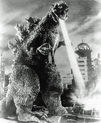
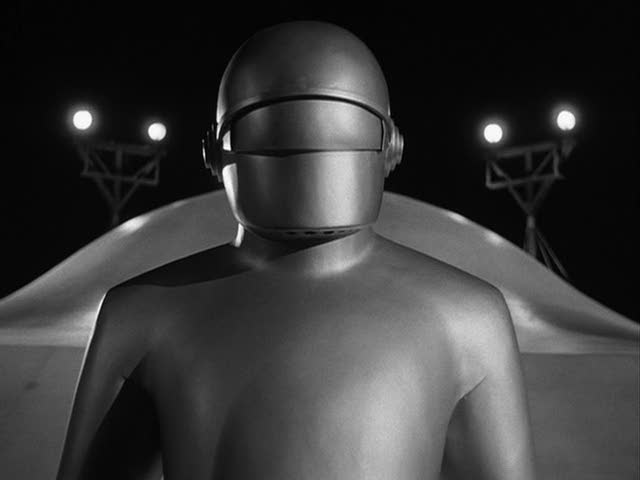
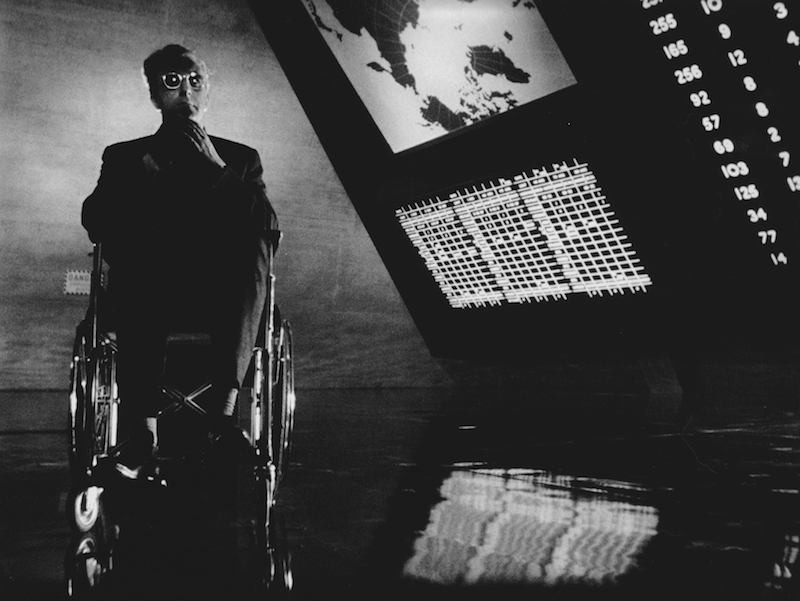
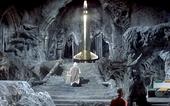
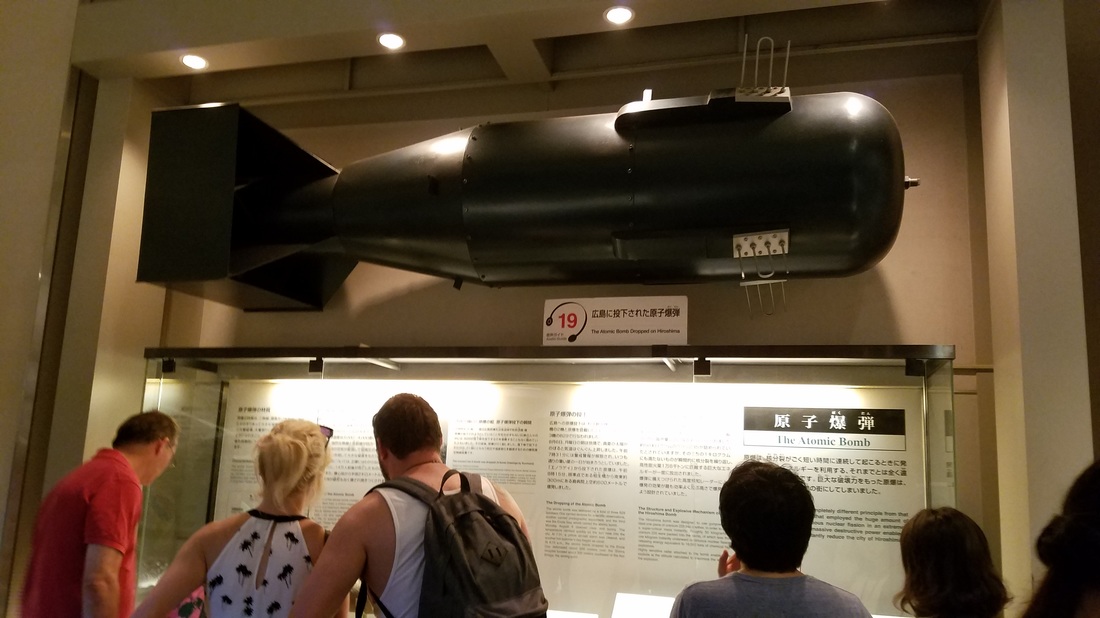
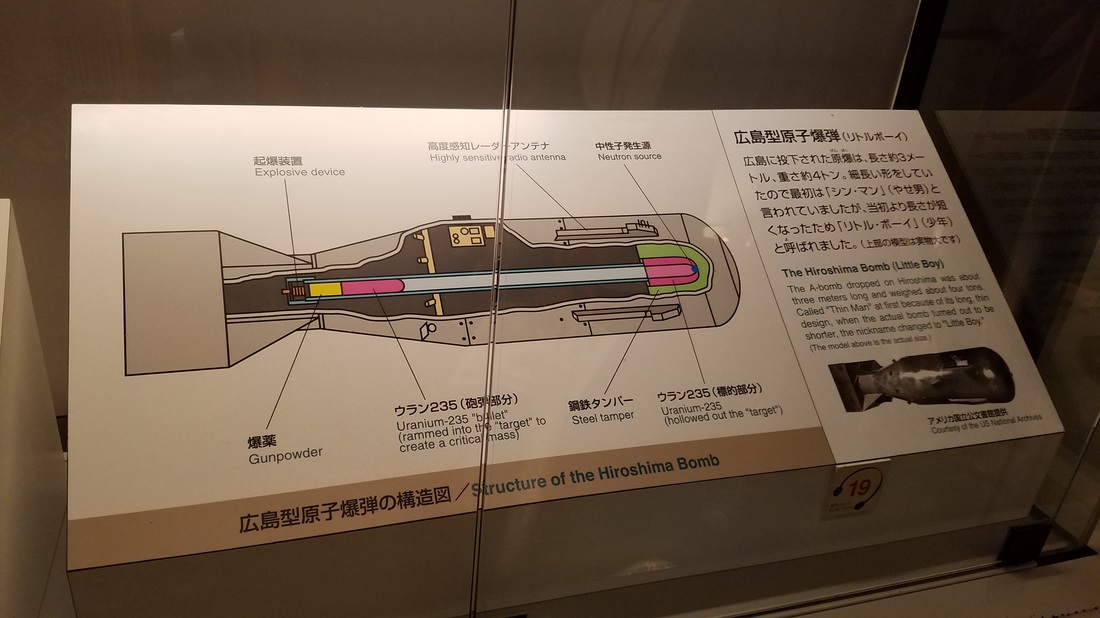
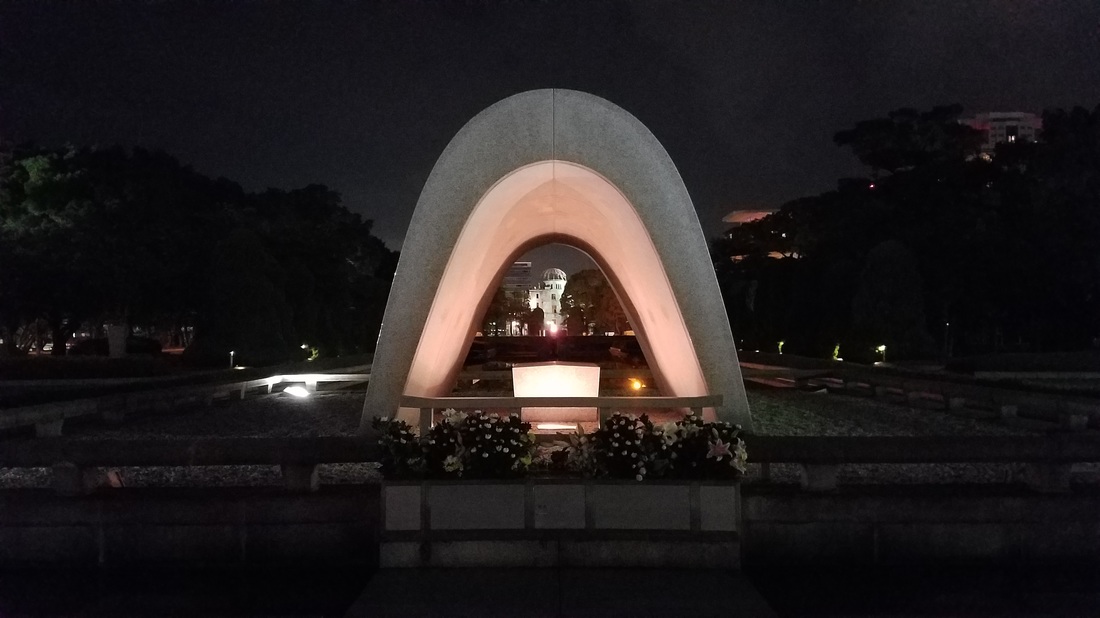
 RSS Feed
RSS Feed